The inaugural BroadcastPro KSA summit brought together regional experts to take a closer look at personalised content strategies, diverse monetisation models and cutting-edge technologies driving the OTT landscape in the MENA region.
Titled ‘Innovate and Captivate: Strategies and Tech in the OTT Realm’, the OTT panel comprised Nisrine Ghazal, Rotana Media VP Digital and CEO of AdArabia; White Peaks Solutions CEO Salloum El Dahdaah; Barry Mark Dubovsky, Showmax Executive; and Marius Johansen, Director of Content Operations and Editorial, Shahid. The panel was moderated by Athanos Jamo, Chief Client Director at Ipsos.
Setting the tone for the discussion, Jamo invited Nisrine Ghazal to summarise the emerging trends in the industry. FAST topped the list. “FAST has been a topic that’s relevant to everyone, from broadcasters and distributors to audiences. Right from content creation and distribution to monetisation, FAST has become a critical factor in all these verticals,” she said.
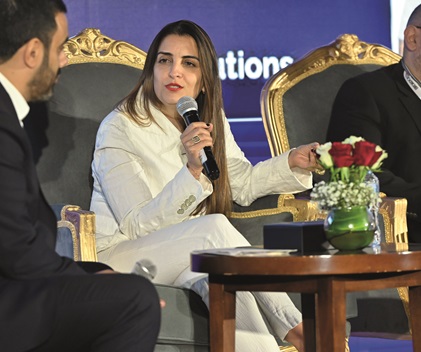
Ghazal also pointed to the rapid growth in CTV, with the medium emerging as the fastest-growing media channel in terms of ad spend. With 46.6% growth during the period 2021- 2023, CTV was the fastest growing in Europe according to a report by IAB MENA. eMarketer forecasts that CTV will grow by 41% in the 2023-2024 period. CTV is trending not only in Europe but is also catching up regionally, she noted.
Next on Ghazal’s list were consolidations and partnerships. “Consolidations are important because advertisers are now looking at volume, and broadcasters cannot deliver that volume at scale with just their inventory. This is pushing broadcasters and OTT platforms to become ‘frenemies’ where broadcasters can merge their inventory on one platform to address the needs of advertisers through a single access point,” she said.
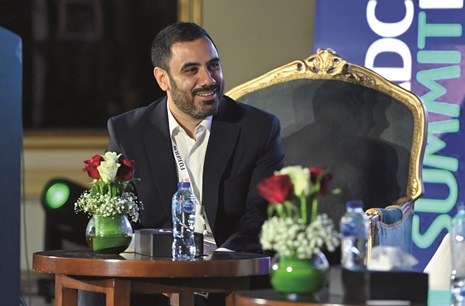
According to Ghazal, SVOD, SVOD Lite, AVOD and AI are other trends that will impact revenue generation, audience engagement, and retention and subscription models in the region. Exemplifying this is Showmax, the largest OTT SVOD platform in Africa. The homegrown platform has overtaken Netflix in the African continent according to a report by Omdia Research. As of November 2022, Showmax claimed 39% of the African market compared to Netflix’s 33.5%.
Tailoring content and its delivery to user preferences
Dubovsky attributed this success to the platform’s content and localisation strategies. “This is a theme that resonates very strongly with Showmax. Local content is the driving force across the Sub-Saharan African territories we operate in. But the localisation extends beyond content. We have localised accessibility, personalisation, payment channels and even distribution partnerships. These are the elements that set us apart and are essentially part of the secret sauce,” he explained.
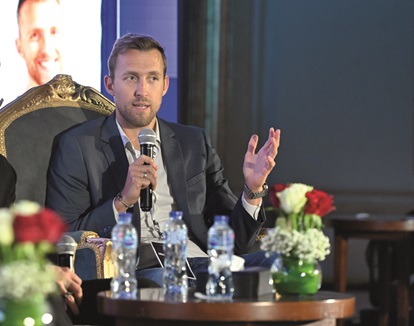
Johansen agreed. Emphasising Shahid’s strong positioning in MENA to capitalise on the local market, he said: “One benefit Shahid has is the relatively large free-to-view options from MBC. We get a lot of content from those channels that we leverage on our platform.”
However, El Dahdaah from White Peaks Solutions opined that the starting point for differentiation isn’t content. “It starts from your target – what do you want to achieve with your platform? Do you want to monetise it? Or do you want ads? Once you set the target, then define the audience, start acquiring or producing content that can serve this audience and factor in a robust technology to drive everything you are doing. This how OTT platforms can grow,” he said.
Whichever approach to content is chosen, ultimately localising content remains a critical element. The hyper localisation in MENA, ranging from content creation to distribution and monetisation, has led to the emergence of a unique complementarity between OTT platforms and traditional linear broadcasting. According to Johansen, this complementarity offers huge benefits for broadcasters.
“The arrangement allows us to offer different viewing options to different audiences. People who have a preference to watch free-to-view content on linear TV can keep doing that. Meanwhile, the digital and SVOD platforms will allow viewers to subscribe and gain access to premium content, and then they can get additional free content on linear TV,” he elaborated.
Diverse monetisation models
Complementarity allows broadcasters to optimise their investment in content. In Johansen’s words, “Broadcasters can buy content for a particular service, such as linear TV or SVOD, and then spread that across multiple platforms. This benefits viewers too as content can be shifted across various platforms.”
Ghazal added: “If broadcasters can convert their channels from linear to digital or analogue to digital, then they can monetise through connected TVs, ad servers and demand partners.”
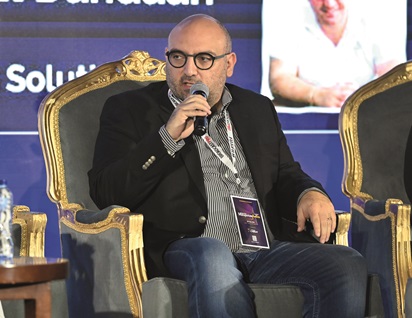
Complementarity is also proof that linear TV is not declining. Ghazal highlighted Ipsos’ weekly reports on audience behaviour that record an average viewing time of five hours and 46 minutes of linear TV in KSA. Similarly, research firms such as GWI, eMarketer and Statista report an average viewing time of three to six hours.
Despite this, broadcasters on linear TV haven’t been able to attract advertisers. Ghazal believes this is due to the platform’s inability to offer advertisers targeted marketing and precise performance measurements. She further noted how this is just a regional drawback. “Europe solved this issue in 2011 with the introduction of HbbTV. They embedded HbbTV signals in their broadcast satellite feeds to any connected TV device as well as ad servers. HbbTV has arrived in the region through Adarabia’s marketplace and broadcasters can now transform their analogue satellite channels to digital through this technology and monetise it through Adarabia.”
It’s worth noting that performance measurement is a stumbling block with OTT platforms as well. As Dubovsky noted, “A major issue with OTT is that everyone sits in silos. The information isn’t democratised, especially for content creators and vendors. So they don’t get a sense of how much value they are adding to the business.” However, things are changing, especially since Netflix started publishing its numbers.

The panellists collectively agreed that transparency is key for the survival of OTTs moving forward. “Transparency is the future. Currently, one of the greatest deterrents for advertisers is a lack of precision. We have to provide the metrics that will enable them to justify ad spend and increase it on certain platforms versus others,” stressed Ghazal.
Furthermore, as broadcasters and advertisers seek to personalise content delivery, they also need to focus on privacy regulations. “Harvesting user data isn’t permissible and no viewer will accept it. At the most, broadcasters or OTT platforms can make use of simple surveys or questionnaires to determine viewing preferences, and even allow the creation of personal IDs on their platforms,” El Dahdaah noted.
Another challenge broadcasters and streaming platforms face is striking a balance between customer satisfaction and revenue generation. In this regard, Dubovsky emphasised the necessity to transact with customers on their terms. He noted how Showmax has doubled down on its existing retail network to find “every single way that a potential customer is willing to transact with them and become a subscriber”. Given that most of its customer base has very low disposable income, the company had to devise innovative ways to appeal to the mass segment. “We had to find ways of reducing the cost for a customer to come onboard. For instance, we targeted Africa’s mom-andpop stores that have been around for decades to offer customers discounts on subscription packages,” he said.
“Consolidations are important because advertisers are now looking at volume, and broadcasters cannot deliver that volume at scale with just their inventory” – Nisrine Ghazal, Rotana Media VP Digital and CEO of AdArabia
Showmax was able to reduce its customer acquisition cost by over 50% while improving the overall customer satisfaction. Dubovsky credited this to “being micro segmented around the company’s customer base and shifting spend from paid to organic channels”. He highlighted how the shift, backed by a strong social media presence, has been one of the most successful commercial strategies the company has implemented. He also spoke favourably about the use of AVOD in bringing down viewing costs for customers.
In the same vein, Shahid has ensured that it is accessible to a wide range of viewers. A majority of the platform’s content is free. “At Shahid, we keep the monetisation model relatively simple. We have an AVOD proposition where people can enjoy our content for free, even some of the premium content; for instance the first episode of an original. Viewers can get a sense of the piece of content and then subscribe to it. Viewers are quite happy with this option and we see a lot of conversion here,” explained Johansen. He also noted the availability of FAST channels and live channels on Shahid.
At the Rotana Group, CTV is the chosen model for revenue growth, given its rising popularity in the region. “IAB MENA has a task force specifically for CTV that includes people from media agencies, tech companies, broadcasters and suppliers. Everyone is focusing on CTV and this is also evident in the numbers in Zenith Ad Expenditure Report for this region, which forecasts that nearly half a billion dollars will be spent on CTV,” Ghazal commented.
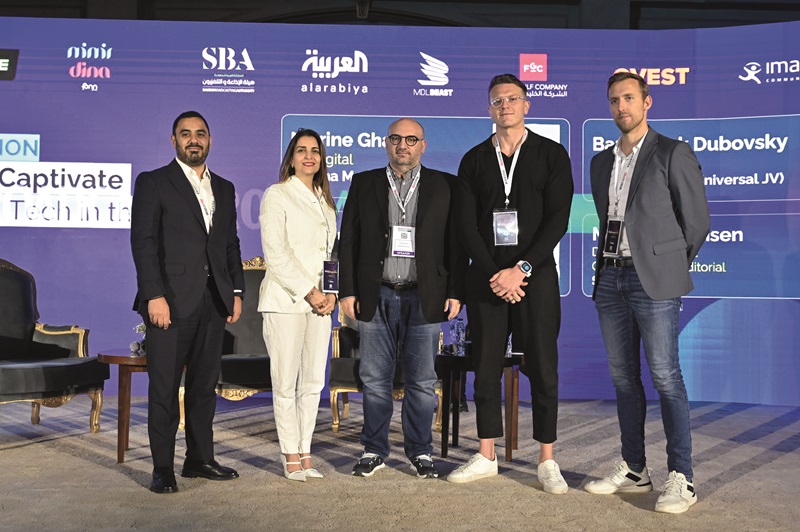 “That is a significant amount, but we have to remember that 78% of digital is taken by Google and Meta through channels such as YouTube. That means 78% of the income doesn’t get redistributed in the region, it won’t be taxed by our governments and will leave our region. It’s imperative that we now urge our governments to get involved and put policies in place so that when we do look at whatever is left from that 78%, we’re not fighting each other on that. We’re growing the pie and growing our share of ad expenditure,” she exhorted.
“That is a significant amount, but we have to remember that 78% of digital is taken by Google and Meta through channels such as YouTube. That means 78% of the income doesn’t get redistributed in the region, it won’t be taxed by our governments and will leave our region. It’s imperative that we now urge our governments to get involved and put policies in place so that when we do look at whatever is left from that 78%, we’re not fighting each other on that. We’re growing the pie and growing our share of ad expenditure,” she exhorted.
Efficient content delivery
As FAST channels gain popularity across MENA, content delivery networks (CDNs) are also evolving to accommodate the increasing demand for live streaming and real-time content delivery. “With FAST channels, the technical part of content preparation is very important. White Peaks has been working on a technical model whereby broadcasters or content owners can launch thousands of channels without using any CPUs that are transcoded. It also allows them to create unlimited channels and combine videos. This lowers costs significantly and allows platforms to leverage their content,” noted El Dahdaah.
“A major issue with OTT is that everyone sits in silos. The information isn’t democratised” – Barry Mark Dubovsky, Showmax Executive
As the discussion drew to a close, El Dahdaah emphasised the need for stringent laws to uphold the security and integrity of content delivery. While DRM and tokenisation are available, they are not enough. “There has to be a more robust legal framework. Content theft can be curbed only if it is deemed a crime globally.”


































































